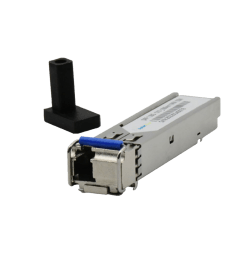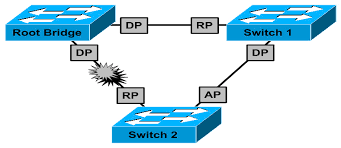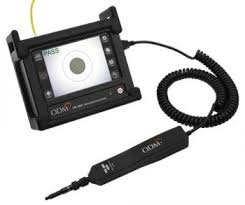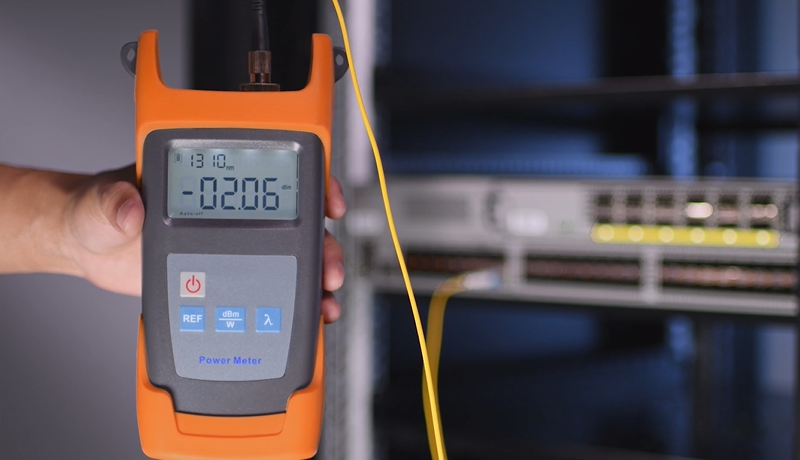Fiber optic module operating temperature
Generally, a qualified optical receiver undergoes a series of rigorous tests before delivery. It is obvious that the temperature tests are considered as one of the important parts in the whole testing process. How to define the temperature of photoreceptors? Why is operating temperature important for modules? What factors affect the working temperature of photoreceptors? This article describes how to test the temperature in the optical modules produced in Orionet.
Basics of operation temperature of sfp optical transmitter and receiver
The temperature range of the optical receiver determines the numerical value of the available temperature of the module. Different modules have different temperature ranges depending on their type, form factor, application and manufacturers. Typically, fiber optic transmitters and receivers are classified into three temperature levels in terms of practical application:
*Commercial temperature range: 0°C to 70°C (indicated by “COM”)
*Extended temperature range: -20°C to 85°C (indicated by “EXT”) (certain regions)
*Industrial temperature range: -40°C to 85°C (indicated by “IND”)
sfp operating temperature
In general, optical fiber transmitters and receivers are mainly deployed in enterprises, telecommunication centers and small-sized offices and large-scale data centers. However, optical receivers are likely to be deployed in some sparsely populated areas such as remote telecommunication centers, industrial centers, high humidity centers, mountains, etc. When purchasing, the temperature range parameter of the modules is provided in the specification table. And it is better to choose a better option for a longer life of the optical module according to the place of use and the system used.
Why do fiber optic transmitters and receivers have a temperature operating range?
Each transceiver module has a vendor-defined operating temperature range. If the temperature becomes too high or too low, i.e. more than the average temperature, the modules will not perform well or even work normally. As a result, there is a risk of resulting delays that cause outages, slowness and network failure.
Problem and challenges of high temperature sfp
High temperature affects optical communication, so various methods have been developed to deal with heat issues – installing cooling system in the data center and other things to cool the systems. If you plan to install fiber infrastructure in some hot environment, temperature is 100% non-negligible. When the working temperature is too high, the module will cope with the increase in optical power, which will lead to incorrect reception of signals and poor performance. Or even worse, the module burns.
Low temperature problem
Typically, operating a fiber optic system generates heat. Contrary to the previous situation, in the data communication industry it is rare to work at a temperature lower than the temperature defined by the vendor. If the operating temperature is too low, the operation of the optical transmitter and receiver will be unstable and abnormal. As a result, avoid installing commercial optical receivers in an environment with a temperature lower than 0 °C.
How does the working range of photoreceptors affect communication?
Modules with low-quality materials and poor internal design show more sensitivity to temperature deviations and thus cause poor heat dissipation. Abnormal receiver temperature happens frequently. As a result, unstable operation cannot be avoided. The key to solving this problem is not complicated at all. Find a reliable manufacturer that has an accurate module temperature testing system.
Reuse of second-hand and referred modules
One of the choices for some consumers is the use of second-hand modules or “affordable” reefer. In fact, the price of used modules is lower and they may work normally in some conditions. But it should still be noted that second-hand modules are prone to temperature sensitivity issues due to some defective or used internal parts. If the working range of the new module is 0-70℃, the second-hand module will mostly not reach the level. The cost of replacement and maintenance is much more than the money you have saved in the beginning. There are plenty of reefer and second-hand Cisco modules in the market that offer new labels and boxes or other brands with a label change instead of other brands. Eriont production modules have a guarantee and are compatible with all the products of different brands.
It is very important that the operation temperature of the optical transmitter and receiver is stable and within the critical range. Arionet, in keeping with the trend, produces various types of optical receivers, including commercial and industrial ones. To ensure high quality and performance, each module passes detailed tests, including temperature tests, from the Arivant test center.

cwdm sfp










